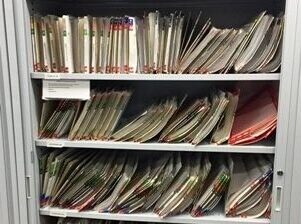
Documentation Requirements for GMP Warehouse
- Kazi
- Last modified: April 2, 2024
GMP rules require that companies have starting materials and finished product traceability all along the supply chain. This is achieved by accurate recording in official records and registers, the movement of all materials and products at all stages of the product cycle.
A mix-up of sodium chloride and potassium chloride may be undetected by the laboratory, but could have fatal consequences for patients injected with the wrong salt.
GMP rules require that there is extensive record keeping on the receipt, testing, storage, issue, and use of starting materials for this very reason. Without accurate and detailed records in the warehouse, it may not be possible to investigate a problem quickly or thoroughly. Any delay may cause additional problems for patients. Certainly in the case of a recall the size of the recall will be determined by the accuracy and completeness of the warehouse records.
“Forward” traceability is needed in case the supplier discovers a defective starting material that may harm patients. “Backward” traceability is needed in case a patient or healthcare professional reports an adverse event or defective product. Only by having a complete chain of toward and backward traceability can patients’ health be protected.
Inward goods
Starting materials are purchased only from approved suppliers and to authorized specifications.
Each separate material is given a Unique Identifying Number (UIN) from the Goods Received Register.
The UIN and the standard name are used throughout manufacturing to identify that material and to trace its history from supplier to customer.
Goods Receipt Register
A register should be established showing the receipt of starting materials. The register should include:
- Date of receipt
- The standard name of material
- The supplier’s and the manufacturer’s name for the material (if different)
- Manufacturer’s batch or reference number
- Total quantity and number of containers received
- The UIN assigned after receipt
- The approved supplier name for the chemical
- The approved manufacturer name
- The company item code
- The company standard name that is used on the Bill of Materials
- The grade of the material e.g. USP, BP, EP
- Reference to any Material Safety Data Sheets (MSDS) or safe-handling requirements
- External customers, such as suppliers or distributors, may submit a PO.
- The warehouse management system may generate a PO for materials when supply is low. If this system is linked to an MRP or production planning system, the warehouse management system could create POs from suppliers.
- Depending on the company setup, internal company departments, such as the QC, the laboratory, a production, could “purchase” raw materials from warehouse.
- Maintaining proper housekeeping, and storing the right goods in the right locations.
- Protecting goods from pests and maintaining appropriate air and temperature controls for the goods.
- Only issuing materials to manufacture that have been approved by QC.
- Adhering to FIFO principles in issue to manufacture and dispatch to customer.
- Having procedures for managing recalls.
- Maintaining accurate documentation.

Author: Kazi Hasan
Kazi is a seasoned pharmaceutical industry professional with over 20 years of experience specializing in production operations, quality management, and process validation.
Kazi has worked with several global pharmaceutical companies to streamline production processes, ensure product quality, and validate operations complying with international regulatory standards and best practices.
Kazi holds several pharmaceutical industry certifications including post-graduate degrees in Engineering Management and Business Administration.

How can I do cleaning validation